The Aztec Warrior Society: Understanding Their Military Strategies and Customs
The Aztec warrior society is a fascinating aspect of ancient history that continues to captivate the minds of historians and enthusiasts alike. This article delves into the intricacies of their military strategies and customs, offering a unique glimpse into the world of these formidable warriors. From their strict training regimens to their formidable battle strategies, the Aztecs developed a military system that set them apart from their contemporaries. With a focus on discipline, loyalty, and a deep sense of religious significance, the Aztec warriors were a force to be reckoned with. Join us as we explore the rich historical background, military organization, and the unique weapons and armor of these fearless warriors.
Contents
- Historical Background
- Military Training and Discipline
- Military Organization and Ranks
- Battle Strategies
- Weapons and Armor
- Cultural Customs in Warfare
- Women Warriors: The Cihuacōātl
- Conclusion
- Frequently Asked Questions
- References
-
Frequently Asked Questions
- 1. What was the significance of the Aztec warrior society in Aztec culture?
- 2. How were Aztec warriors trained for combat?
- 3. What was unique about the Eagle and Jaguar Warriors?
- 4. How was the Aztec military organized?
- 5. What battle strategies did the Aztec warriors employ?
- 6. Why was capturing prisoners important for Aztec warriors?
- 7. What were the primary weapons and armor used by Aztec warriors?
- 8. What cultural customs did the Aztec warriors follow in warfare?
- 9. Were there women warriors in the Aztec society?
- 10. How did the Aztec warrior society contribute to Aztec civilization?
- References
- Read More
Historical Background

The historical background of the Aztec warrior society is deeply intertwined with the rise and fall of the Aztec Empire. The Mexica people, who would later become known as the Aztecs, initially settled in the Valley of Mexico in the 13th century. At that time, the region was dominated by larger city-states such as Tlacopan, Texcoco, and Tenochtitlan, the capital of the Aztec Empire. The Mexica people were initially considered a subordinate group, but they eventually gained political power through alliances and military conquests. In the 15th century, under the rule of influential leaders such as Itzcoatl, Montezuma I, and Montezuma II, the Aztec Empire reached its peak, extending its dominion over a vast territory in Mesoamerica. Despite their military prowess, the Aztecs faced numerous challenges, including strife with rival city-states and the arrival of the Spanish conquistadors led by Hernán Cortés in the early 16th century. This encounter resulted in the eventual downfall of the Aztec Empire, marking a significant turning point in their history. Understanding the historical context is essential in comprehending the development of the Aztec warrior society and their military strategies.
Military Training and Discipline
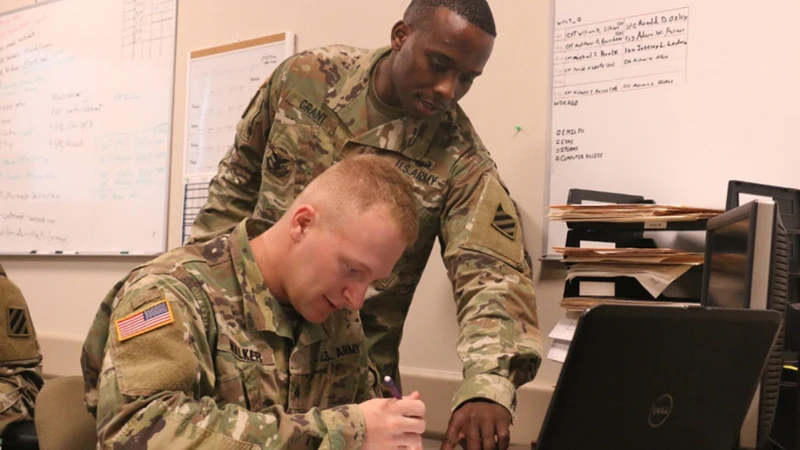
The Aztec warrior society placed a paramount importance on military training and discipline. From a young age, aspiring warriors underwent a strict and rigorous training regimen that prepared them physically, mentally, and emotionally for battle. Training sessions included intense physical exercises, such as running, jumping, and swimming, to build strength and endurance. Additionally, warriors received combat instruction, learning techniques for hand-to-hand combat and the use of weapons. Discipline was a fundamental aspect of their training, with an emphasis on obedience, respect, and the ability to follow orders without hesitation. Loyalty to the empire and their commanders was instilled in every warrior, as they were trained to prioritize the needs of the community over personal desires. These principles ensured the cohesion and effectiveness of the Aztec military. It is important to note that the training and discipline varied among different ranks within the warrior society, with elite warriors like the Eagle and Jaguar Warriors receiving additional specialized training. The commitment to training and discipline allowed the Aztec warriors to execute their military strategies with precision and unwavering determination.
Strict Training Regimen
The Aztec warrior society implemented a strict training regimen to ensure their warriors were physically and mentally prepared for battle. From a young age, boys were enrolled in telpochcalli, a type of military school, where they underwent rigorous training. Physical fitness was paramount, and they engaged in activities such as running, swimming, and mock battles to build strength and endurance. Combat skills were honed through intensive weapon training and practice. Eagle and Jaguar Warriors were an elite rank within the Aztec warrior society and underwent even more rigorous training. They were required to capture prisoners in battle, a task that required exceptional skill and bravery. The strict training regimen instilled discipline, determination, and a sense of loyalty towards their empire and leaders. It prepared the warriors to face the challenges of combat with resilience and expertise, making them formidable opponents on the battlefield. This focus on training was an integral part of the Aztec warrior society and played a crucial role in their military success.
Emphasis on Discipline and Loyalty
The Aztec warrior society placed a strong emphasis on discipline and loyalty, essential qualities for their military success. Discipline was instilled from a young age through rigorous training regimens. Young boys were enrolled in military schools called calmecacs, where they were subjected to intense physical training and taught the art of warfare. These schools focused on developing mental fortitude, physical strength, and tactical thinking. The warriors were expected to show unwavering loyalty to their leaders and to the Aztec Empire. This loyalty was reinforced through a strong sense of collective identity and a deep belief in the divine mission of the Aztec people. It was believed that by protecting and serving the empire, the warriors were serving the gods themselves. This sense of duty and devotion created a bond among the warriors and instilled a sense of unity and unwavering commitment to their cause. The discipline and loyalty of the Aztec warriors helped forge a formidable force that was able to defend and expand the Aztec Empire. Their unwavering commitment to their leaders and their empire proved crucial in the face of adversity and external threats. This strong emphasis on discipline and loyalty set the Aztec warriors apart and contributed to their military success.
Uniqueness of the Eagle and Jaguar Warriors
The Eagle and Jaguar Warriors were two elite warrior classes within the Aztec society, each with their own unique characteristics and roles. The Eagle Warriors, also known as “Cuāuhocēlōtl” in the Nahuatl language, were recognized for their bravery and agility in battle. They wore distinctive feathered headdresses adorned with the feathers of eagles, symbolizing their connection to the gods and the celestial realm. The Jaguar Warriors, or “Ocelomeh,” on the other hand, represented strength and power. They donned garments made from jaguar skins and wore intricate jaguar-inspired helmets. Both warrior classes were respected and feared, as their appearance alone struck fear into the hearts of their enemies.
These elite warriors had a significant role in Aztec military strategies. The Eagle and Jaguar Warriors were often deployed in the frontlines, leading the charge into battle. Their physical prowess and unique attire served as a source of inspiration for the rest of the warriors. Their primary objective was not just to defeat the enemy but also to capture prisoners for sacrificial rituals. The capture of enemy soldiers held immense religious significance for the Aztecs, as it allowed for the continuation of the cycle of life and death. This focus on capturing prisoners for sacrifice distinguished the Aztec warrior society from many other ancient civilizations.
In addition to their combat skills, the Eagle and Jaguar Warriors also participated in ritual dances and ceremonies that were an integral part of Aztec culture. These ceremonies were held to honor the gods and demonstrate the warriors’ loyalty and commitment to their people. The Aztec belief system was deeply intertwined with their military customs, and these elite warrior classes played a central role in upholding and protecting their religious practices. The unique attributes and roles of the Eagle and Jaguar Warriors embody the multifaceted nature of the Aztec warrior society and its rich cultural traditions.
Military Organization and Ranks
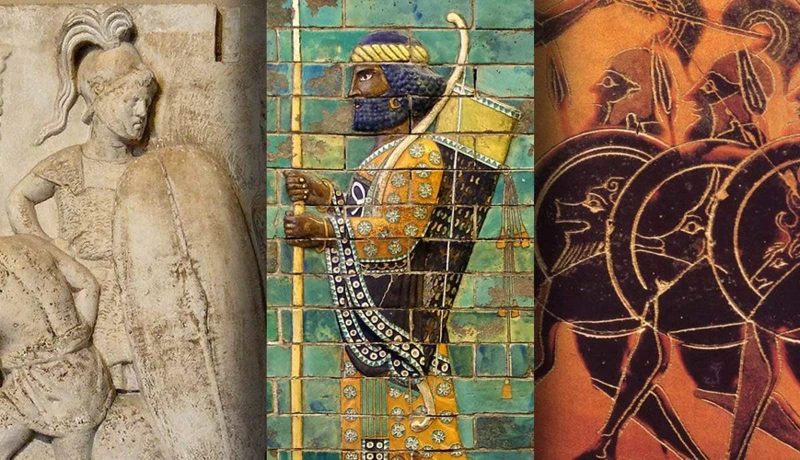
The military organization of the Aztec warrior society was well-structured and hierarchical. At the top of the hierarchy was the supreme ruler, known as the tlatoani, who held absolute authority over the military and civil affairs of the empire. They were advised by a council of nobles and military commanders. The military was divided into different ranks, with the highest-ranking warriors being the Eagle and Jaguar warriors. These elite warriors were known for their courage, skill, and ferocity in battle. They wore distinct and ornate feathered costumes, showcasing their prestigious status. Below the Eagle and Jaguar warriors were the Otomies, who served as the core of the Aztec army. They were followed by the common foot soldiers, equipped with basic weapons and armor. The military organization also encompassed specialized units such as archers, slingers, and spear throwers, each playing a crucial role in battle. The organization of the Aztec warrior society ensured efficient coordination and execution of military strategies. This hierarchical structure was driven by a sense of loyalty and devotion to the empire, making the Aztec army a formidable force on the battlefield. Understanding the military organization and ranks provides valuable insights into the power and effectiveness of the Aztec warrior society.
Battle Strategies

Battle strategies played a crucial role in the success of the Aztec warrior society. One notable tactic employed by the Aztecs was their “Shock and Awe” approach, which aimed to intimidate and disorient their enemies. Through the use of loud war cries, marching in unison, and displaying their impressive weapons and distinctive regalia, the Aztec warriors sought to create fear and uncertainty in their opponents. Additionally, psychological warfare was an integral part of their strategy. The Aztecs would strategically position themselves to create illusions and disarray among their foes, often using the element of surprise to gain an advantage. Another key aspect of Aztec battle strategies was the importance placed on capturing prisoners for sacrifice. This was not only seen as a victory in itself but also had religious significance for the Aztecs. By sacrificing prisoners, they believed they were appeasing the gods and ensuring their own prosperity. These battle strategies, combined with the Aztecs’ fierce determination and unwavering loyalty to their empire, made them a force to be reckoned with on the battlefield. Understanding their innovative and unique approach to warfare provides valuable insights into the power and influence of the Aztec warrior society.
Shock and Awe Tactics
The Aztec warrior society employed shock and awe tactics as a key aspect of their military strategy. These tactics were designed to instill fear and confusion in their enemies, giving the Aztecs a significant advantage on the battlefield. One of the most notable shock and awe tactics employed by the Aztec warriors was the use of loud, intimidating war cries and drumbeats, which created a cacophony of noise that could be heard from a distance. This served to disorient the enemy forces and create a psychological impact. Another tactic was the utilization of brightly colored and elaborately decorated outfits adorned with feathers and animal pelts, making the warriors appear larger and more formidable than they actually were. Additionally, the Aztecs would strategically deploy their Eagle and Jaguar warriors, who were revered for their bravery and ferocity. The sight of these warriors, with their distinct headdresses and fierce countenances, struck fear into the hearts of opposing forces. By employing shock and awe tactics, the Aztec warriors were able to gain a psychological advantage over their enemies, demoralizing them and making it easier to achieve victory in battle. Understanding these tactics provides insight into the strategic mindset of the Aztec warrior society and highlights their skill at utilizing psychological warfare to dominate their opponents.
Use of Psychological Warfare
One of the most intriguing aspects of the Aztec warrior society was their adept use of psychological warfare. They understood that instilling fear and confusion in their enemies could be just as effective as physical combat. The Aztecs employed various tactics to achieve this, leveraging their knowledge of human psychology. They would often engage in elaborate displays of power and grandeur, showcasing their military might through impressive formations and elaborate war dances. These displays served to intimidate their foes and weaken their morale before the battle even began. Additionally, the Aztecs would strategically employ propaganda to spread fear and uncertainty among their enemies. They would send messengers to deliver exaggerated tales of their past conquests, highlighting their strength and invincibility. This psychological manipulation aimed to create a sense of hopelessness and fear among their adversaries, making them more susceptible to defeat. By utilizing psychological warfare alongside their formidable military strategies, the Aztecs were able to gain a significant advantage in battle.
Importance of Capturing Prisoners for Sacrifice
The Aztec warrior society placed great importance on capturing prisoners for sacrifice, which played a significant role in their religious beliefs and customs. According to Aztec mythology, the gods required human blood to sustain the balance of the universe, and it was the duty of the Aztecs to provide this essential sacrifice. The act of capturing prisoners in battle was considered a noble endeavor and a way for the warriors to demonstrate their bravery and skill. These prisoners, known as “tlamatini,” were considered sacred offerings to the gods. They would be taken back to the city and prepared for sacrifice in elaborate ceremonies. The Aztec people believed that the sacrifice of these captives would please the gods, ensuring fertility, agricultural abundance, and protection for their empire. The process of sacrificing prisoners was highly ritualized, involving a variety of religious practices, including the extraction of the heart. This act was seen as a way to release the life force of the captive, which would then be offered to the gods. The importance of capturing prisoners for sacrifice reflects the deeply religious nature of the Aztec warrior society and their commitment to fulfilling their spiritual obligations. Understanding this cultural practice is crucial in gaining a comprehensive understanding of the Aztec military customs and strategies.
Weapons and Armor
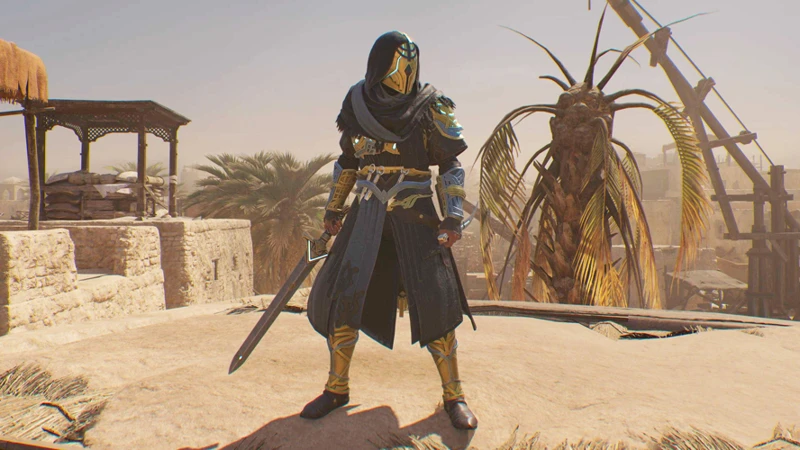
The weapons and armor used by the Aztec warrior society were essential for their effectiveness in battle. One of the most distinctive weapons was the macuahuitl, a sword-like weapon made from wood embedded with sharp obsidian blades. The macuahuitl had the ability to inflict devastating wounds, capable of severing limbs with ease. To protect themselves, the Aztec warriors used a traditional shield known as the otomitl. Made from wood and covered with animal skin, these shields provided defense against projectiles and melee attacks. Another significant weapon was the atlatl, a spear-throwing device that enhanced the range and accuracy of their attacks. The Aztecs also utilized a variety of other weapons such as javelins, slings, and bows and arrows. Their armor consisted of padded cotton armor known as ichcahuipilli, which protected their bodies from cuts and blows. The elite Eagle and Jaguar warriors wore distinctive feathered headdresses and animal skins to strike fear into their enemies. The Aztec warriors’ weapons and armor were crucial in their military strategies and played a vital role in their success on the battlefield.
Macuahuitl: The Aztec Obsidian Sword
The Macuahuitl was a remarkable weapon used by the Aztec warriors and is often referred to as the “Aztec Obsidian Sword”. It was a unique and deadly weapon that struck fear into the hearts of their enemies. The Macuahuitl consisted of a wooden frame with segments of obsidian blades embedded in it. The obsidian, a volcanic rock that could be shaped into sharp, cutting edges, made the Macuahuitl an incredibly formidable weapon. It was known to cause devastating injuries, capable of severing limbs or decapitating foes in a single strike. The obsidian blades would be replaced or sharpened as they became dull, ensuring the weapon remained lethal. The Macuahuitl was not only a weapon of destruction but also a symbol of status for the Aztec warriors. Its construction showcased the exceptional craftsmanship of the Aztecs. By mastering the use of this unique weapon, the warriors demonstrated their skill, courage, and dedication to their cause. The Macuahuitl played a significant role in the Aztec military tactics, allowing their warriors to dominate their adversaries on the battlefield. /aries-libra-compatibility/
Otomitl: The Traditional Aztec Shield
The Otomitl, or the traditional Aztec shield, played a crucial role in the warfare strategies of the Aztec warriors. These shields were typically circular in shape and made from wood or leather. They were designed to protect the warriors from incoming projectiles such as arrows, spears, and stones. The Aztec shields were not just practical, but also symbolized the status and bravery of the warrior carrying it. Many shields were adorned with vibrant colors and intricate designs, representing the warrior’s allegiance to a specific clan or city-state. The shields were also often accented with feathers, which added to their aesthetic appeal. The Otomitl was not just a defensive tool but could also be used offensively. Warriors could strike opponents with the edge of the shield or utilize it as a throwing weapon. Additionally, the shield could be used for close-quarters combat when paired with other weapons like the macuahuitl or the atlatl. The versatility and functionality of the Otomitl made it an essential component of the Aztec warrior’s armory. It provided both protection and a means to engage in combat effectively.
Atlatl: The Aztec Spear-Thrower
The Atlatl was a vital weapon in the arsenal of the Aztec warriors. This Aztec spear-thrower was a device that increased the power and accuracy of their javelin throws. The Atlatl consisted of a wooden shaft with a hook or spur on one end and a grip on the other. To use it, a warrior would place the javelin onto the hook, allowing them to generate greater momentum when throwing. The additional leverage granted by the Atlatl enabled Aztec warriors to launch their spears with incredible force, extending their effective range in battle. The Atlatl was lightweight, making it easy to wield and carry, which was crucial in the fast-paced nature of Aztec warfare. Its effectiveness on the battlefield made the Atlatl a preferred weapon for both hunting and warfare. The Atlatl played a significant role in the success of the Aztec warriors, demonstrating their ingenuity and resourcefulness in combat. Its use symbolized the skill and precision of the Aztec warrior society, adding to their formidable reputation on the battlefield. The Atlatl remains a testament to the innovative and technical capabilities of the Aztecs. Through their mastery of this weapon, the Aztec warriors were able to unleash devastating attacks against their enemies, further establishing their dominance in warfare.
Cultural Customs in Warfare
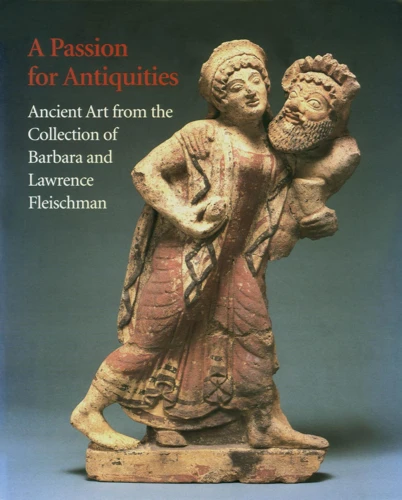
The Aztec warrior society had rich cultural customs in warfare that played a significant role in their military practices. Religion held a paramount importance, as the Aztecs believed that warfare was deeply connected to their spiritual beliefs. Before battles, warriors would partake in elaborate rituals to honor their gods and seek divine protection. These rituals included offerings, prayers, and dances performed by priests and warriors alike. The use of war paint and insignia was also prevalent, symbolizing both personal and group identities. Warriors adorned themselves with colorful feathers, animal skins, and intricate headdresses to invoke courage and intimidate their enemies. The Aztecs also employed psychological warfare tactics, such as making loud cries and noises, to create an atmosphere of fear and confusion on the battlefield. Additionally, capturing prisoners for sacrificial purposes held great significance. These captives were not only seen as offerings to the gods but also as a means to assert dominance over defeated enemies. The cultural customs in warfare of the Aztec warrior society were deeply rooted in their religious beliefs and served to distinguish them as a formidable force in Mesoamerica.
Religious Significance
The religious significance of warfare played a central role in the Aztec warrior society. The Aztecs believed in a complex pantheon of gods and saw warfare as a means of pleasing and appeasing these deities. War was seen as a sacred duty, and warriors were considered to be the chosen instruments of the gods in carrying out their will. Before battles, ceremonies and rituals were conducted to invoke the aid and blessings of the gods. Priests would lead these rituals, offering sacrifices and performing prayers to gain divine favor. The most revered god associated with warfare was Huitzilopochtli, the god of the sun and war. The Aztecs believed that their success in battles was directly linked to the favor of Huitzilopochtli. Warriors fought with zeal and fervor, believing that their bravery in battle would earn them a place in the paradise of the afterlife, known as the “House of the Sun.” This religious significance permeated every aspect of warfare, solidifying the connection between the divine and the earthly realm. The Aztec warrior society’s reverence for their deities and their belief in the spiritual significance of battle shaped their military strategies and customs, infusing their actions with a higher purpose and divine guidance. (Source: [Role of Zodiac Signs in Career Success](/role-zodiac-signs-career-success/))
Warrior Rituals and Dances
Warrior rituals and dances held immense significance within the Aztec warrior society. These religious and ceremonial practices were deeply ingrained in their culture and played a vital role in preparing warriors for battle. One prominent ritual was the “Ochpaniztli,” a month-long celebration dedicated to the Aztec god of war, Huitzilopochtli. During this festival, warriors engaged in mock battles and participated in elaborate dance performances. The dances themselves were intricate and rhythmic, often accompanied by the beating of drums and the blowing of conch shells. The purpose of these dances was twofold: to honor the gods and to instill a sense of unity and bravery among the warriors. The warriors would wear elaborate feathered headdresses, vibrant costumes, and iconic eagle or jaguar warrior disguises to showcase their allegiance and symbolize their connection to the divine. These warrior rituals and dances served as a form of spiritual preparation, invoking the favor of the gods and channeling their divine energy into the upcoming battles. Through these sacred ceremonies, the Aztec warriors sought the strength and protection needed to face their enemies on the battlefield. The warrior rituals and dances were an integral part of the Aztec warrior tradition, capturing the essence of their deeply religious and warrior-centric society. [Learn more about the importance of spirituality in astrology here](/uranus-individuality-revolutionary-energy-in-astrology/).
Use of War Paint and Insignia
The use of war paint and insignia played a significant role in the Aztec warrior society. Warriors would adorn themselves with vibrant and intricate designs, symbolizing their allegiance, rank, and accomplishments. The war paint would often be applied in a distinctive manner, highlighting their fierce and intimidating presence on the battlefield. These designs would vary depending on the warrior’s status and role within the military hierarchy.
One commonly used symbol was the face of the Aztec war god, Huitzilopochtli. It was believed that by painting their faces with the image of their formidable deity, the warriors would acquire his strength and protection in battle. Other symbols included animals, such as jaguars and eagles, which represented different aspects of warfare. The jaguar symbolized strength, stealth, and ferocity, while the eagle symbolized courage, agility, and a connection to the celestial realm.
In addition to war paint, warriors would also wear distinctive insignia or emblems that identified their rank and achievements. These insignia would often be made from feathers, precious stones, or other decorative materials. For example, a warrior who had captured multiple prisoners in battle might wear a headdress adorned with feathers indicating their success. These emblems served not only as marks of distinction but also as a source of motivation and pride for the warriors.
The use of war paint and insignia in the Aztec warrior society was not just for cosmetic purposes but held deep cultural and symbolic significance. They not only instilled fear in their enemies but also fostered a sense of unity and identity among the warriors. By adorning themselves with powerful symbols, the warriors embodied the ideals and values of their society, further enhancing their reputation and status in the Aztec military hierarchy.
Women Warriors: The Cihuacōātl
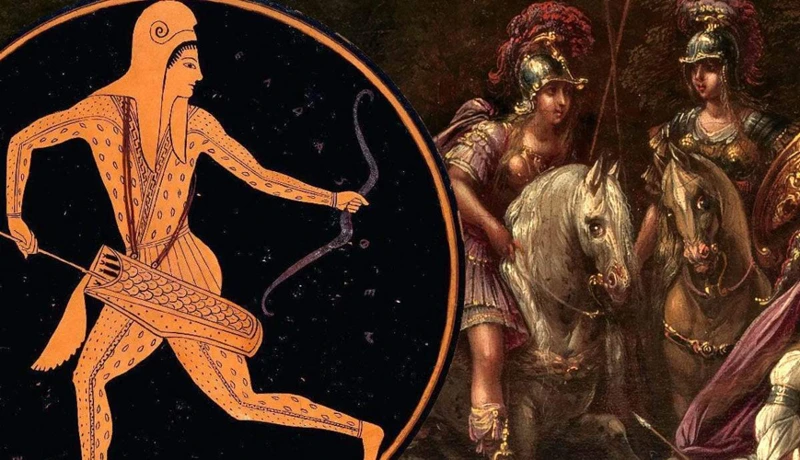
Women played a significant role in the Aztec warrior society, despite the prevalent misconception that Aztec warfare was exclusively male-dominated. The Cihuacōātl, or “women snake warriors,” were highly esteemed female warriors who held important positions within Aztec society. These women warriors were not only skilled in combat, but they also served as leaders and mentors to other members of the warrior society. The Cihuacōātl were chosen based on their exceptional physical prowess and demonstrated bravery in battle. They underwent rigorous training to prepare them for warfare, which included combat techniques, weapons training, and physical conditioning. The Cihuacōātl participated in military campaigns alongside male warriors, fighting side by side in battles. They were known for their fearlessness and determination, often leading their troops with strategic acumen. The role of these women warriors extended beyond the battlefield, as they also held positions of influence in matters of governance and decision-making. Despite their prominent role, the Cihuacōātl were not exempt from the customs and traditions of the time. They adhered to the same code of conduct as male warriors, including rituals, ceremonies, and the observance of religious customs. The inclusion of women warriors in the Aztec warrior society exemplifies the progressive and inclusive nature of their culture, where women were recognized and respected for their martial abilities and leadership skills.
Conclusion

In conclusion, exploring the Aztec warrior society reveals the complexity and ingenuity of their military strategies and customs. From their rigorous training regimens to their emphasis on discipline and loyalty, the Aztec warriors were a cohesive and formidable force. Their unique battle strategies, including shock and awe tactics and the use of psychological warfare, allowed them to effectively conquer and expand their empire. The weapons and armor used by the Aztecs, such as the macuahuitl and otomitl, showcased their innovative approach to warfare. Additionally, the cultural customs surrounding warfare, including the religious significance, warrior rituals and dances, and the use of war paint and insignia, added a sense of symbolism and tradition to their military campaigns. It is also worth noting the presence of women warriors, known as the Cihuacōātl, who played a significant role in Aztec warfare. Overall, the military strategies and customs of the Aztec warrior society provide a unique perspective into the rich history of this ancient civilization.
Frequently Asked Questions

FAQs About the Aztec Warrior Society
1. How were Aztec warriors trained for battle?
Aztec warriors underwent rigorous training from a young age, involving physical conditioning, combat drills, and learning various battle techniques.
2. What was the role of discipline and loyalty in the Aztec warrior society?
Discipline and loyalty were highly valued among Aztec warriors, as they helped maintain unity and effectiveness on the battlefield.
3. Who were the Eagle and Jaguar Warriors?
Eagle and Jaguar Warriors were elite warrior orders within the Aztec society. The Eagle Warriors represented the sun, while Jaguar Warriors embodied the nocturnal powers.
4. How was the Aztec military organized?
The Aztec military was organized into different ranks and units, with each warrior assigned specific roles and responsibilities.
5. What were the battle strategies employed by the Aztecs?
The Aztecs utilized shock and awe tactics, psychological warfare, and the capturing of prisoners for sacrificial purposes as part of their battle strategies.
6. What weapons and armor did Aztec warriors use?
Aztec warriors wielded weapons such as the macuahuitl, a sword-like weapon made of obsidian blades, and utilized otomitl shields and atlatls, spear-throwing devices.
7. Why did the Aztec warrior society place religious significance on warfare?
Religion held great importance in Aztec society, and warfare was seen as a sacred duty to appease the gods and ensure the continued prosperity of the empire.
8. What were some rituals and dances associated with Aztec warriors?
Aztec warriors performed various rituals and dances to honor the gods and seek their favor before and after battle, creating a spiritual connection between warriors and deities.
9. Did the Aztec warrior society include women warriors?
Yes, the Aztecs had an order of women warriors known as the Cihuacōātl, who were highly respected and played significant roles in defending the empire.
10. What led to the decline of the Aztec warrior society?
The arrival of the Spanish conquistadors, led by Hernán Cortés, and the subsequent colonization of the Aztec Empire resulted in the decline and eventual downfall of the Aztec warrior society.
References
Frequently Asked Questions

1. What was the significance of the Aztec warrior society in Aztec culture?
The Aztec warrior society played a crucial role in Aztec culture as they were not only defenders of their civilization but also seen as courageous heroes and honored members of society. They were respected for their military prowess and bravery in battle.
2. How were Aztec warriors trained for combat?
Aztec warriors underwent a strict and rigorous training regimen from a young age. They were taught various combat techniques, physical fitness, and discipline. Their training focused on developing their skills in close combat as well as strategy and tactics.
3. What was unique about the Eagle and Jaguar Warriors?
The Eagle and Jaguar Warriors were elite groups within the Aztec warrior society. They were distinguished by their extravagant attire and symbols of their respective animal counterparts. The Eagle Warriors were known for their ability to soar above the battlefield, while the Jaguar Warriors were revered for their strength and agility.
4. How was the Aztec military organized?
The Aztec military was highly organized and hierarchical. It consisted of various ranks, with the supreme ruler, the tlatoani, at the top. Below the ruler were the military commanders, followed by captains, warriors, and support personnel. Each rank had specific responsibilities and duties.
5. What battle strategies did the Aztec warriors employ?
The Aztec warriors employed a combination of shock and awe tactics and psychological warfare. They aimed to intimidate and demoralize their enemies through impressive displays of military might, such as the use of war chants, drums, and the fluttering of colorful banners.
6. Why was capturing prisoners important for Aztec warriors?
For the Aztecs, capturing prisoners in battle held immense religious significance. Prisoners were often used as offerings in sacrificial rituals to appease the gods. The more prisoners a warrior captured, the higher their status and reputation among their peers.
7. What were the primary weapons and armor used by Aztec warriors?
Aztec warriors primarily used weapons such as the Macuahuitl, a sword-like weapon embedded with obsidian blades, and the Atlatl, a spear-thrower that increased the range and accuracy of their spears. They also utilized the Otomitl, a traditional shield made of wood and leather.
8. What cultural customs did the Aztec warriors follow in warfare?
In warfare, the Aztec warriors adhered to various cultural customs. They considered warfare to have religious significance and performed pre-battle rituals and dances to invoke the favor of the gods. They also adorned themselves with war paint and insignia to display bravery and allegiance.
9. Were there women warriors in the Aztec society?
Yes, there were women warriors known as Cihuacōātl in the Aztec society. Although they were not as prevalent as male warriors, they played important roles in defending their communities and had their own training and warrior traditions.
10. How did the Aztec warrior society contribute to Aztec civilization?
The Aztec warrior society contributed to Aztec civilization by safeguarding their territories, expanding their empire through conquest, and defending their culture and way of life. They played a vital role in maintaining social order and upholding the values and beliefs of the Aztec people.







